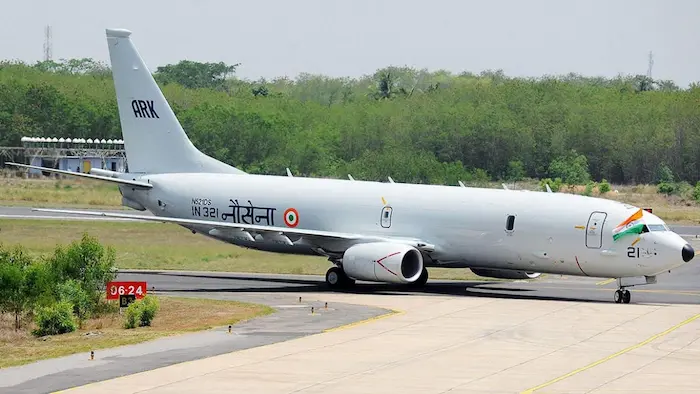
The U.S. has raised the price of P-8I surveillance aircraft by 50% as India negotiates to buy six more
I. The Price Shock: Strategic P-8I Aircraft, Strategic Pressure
In a move that has stirred diplomatic and defense circles, the United States has increased the price of six P-8I Poseidon maritime patrol aircraft by nearly 50%, raising the cost from $2.42 billion in 2021 to approximately $3.6 billion in 2025. This escalation comes as India negotiates the purchase to bolster its maritime surveillance capabilities amid growing Chinese naval activity in the Indian Ocean Region (IOR).
Table of Contents
The P-8I, a customized variant of the Boeing P-8A Poseidon, is a multi-mission aircraft equipped for anti-submarine warfare (ASW), anti-surface warfare (ASuW), and intelligence, surveillance, and reconnaissance (ISR). India currently operates 12 P-8Is, stationed at INS Rajali (Tamil Nadu) and INS Hansa (Goa), which have logged over 40,000 flight hours since induction.
The price hike, attributed to supply chain disruptions and rising production costs, has sparked frustration in New Delhi. Defense analysts warn that the inflated cost could force India to scale back the order to five aircraft, compromising coverage across its vast maritime domain.
II. Strategic Necessity vs Fiscal Reality: India’s Dilemma
India’s need for additional P-8Is is driven by the retirement of Soviet-era Il-38 aircraft and the imperative to monitor expanding Chinese naval deployments. The Indian Navy has long emphasized the requirement for at least 18 P-8Is to ensure full-spectrum surveillance across the eastern and western seaboards.
However, the timing of the price hike is problematic. India is already juggling multiple high-value defense procurements, including:
- $7.6 billion deal for 26 Rafale M fighters
- Investments in Advanced Medium Combat Aircraft (AMCA)
- Induction of Naval Anti-Ship Missile–Medium Range (NASM-MR)
The Ministry of Defence (MoD) had previously stalled the P-8I deal due to budgetary concerns and a push for indigenous platforms under Aatmanirbhar Bharat. Yet, the strategic urgency especially in light of Operation Sindoor and India’s reliance on precision-guided munitions like Excalibur has revived negotiations.
India may now link the P-8I deal to U.S. responsiveness on emergency procurement requests, seeking assurances on timely deliveries and technology transfers to justify the inflated cost.
III. Geopolitical Undercurrents: Trust, Leverage, and the Indo-Pacific Chessboard
The price escalation has broader implications for India-U.S. defense relations. While the Trump administration continues to push for deeper military ties, its “America First” pricing stance raises concerns about long-term reliability and equitable partnership.
India’s strategic calculus includes:
- Balancing U.S. imports with indigenous development
- Leveraging the COMCASA agreement for real-time intelligence sharing
- Integrating NASM-MR missiles into the P-8I platform for enhanced lethality
The P-8I’s arsenal, AGM-84L Harpoon Block II missiles and MK-54 torpedoes, makes it a formidable asset in countering Chinese submarines and surface vessels. But India must now weigh whether the cost aligns with strategic returns, especially as it eyes 31 MQ-9B Sea Guardian UAVs and 24 MH-60R helicopters to complement its maritime surveillance grid.
The outcome of this deal could set a precedent for future defense negotiations, influencing India’s procurement strategy and its role in the Indo-Pacific security architecture.
Stay updated with the latest news on Rapido Updates. Keep yourself updated with The World, India News, Entertainment, Market, Automobile, Gadgets, Sports, and many more